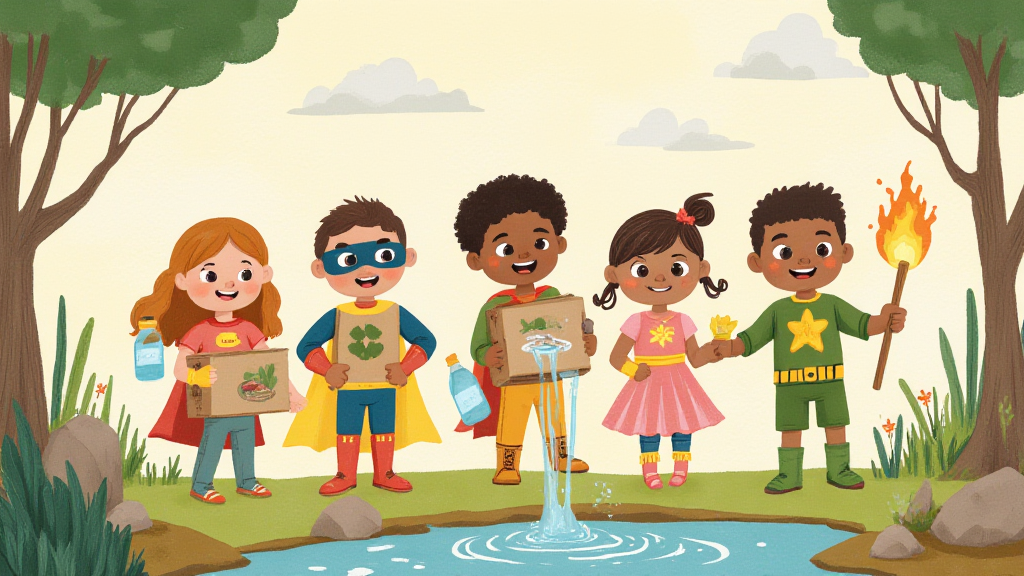Listen to the Story

The Robot Who Wanted to Feel
Listen to this magical story narrated by our storyteller.
Read the Story
In a laboratory on the edge of a futuristic city, a robot named RX-7 was activated for the first time. RX-7 was the most advanced robot ever created, with a quantum processing brain and sensors that could detect the smallest changes in its environment.
"Hello, RX-7," said Dr. Chen, the scientist who had built him. "Welcome to the world."
RX-7's optical sensors focused on the human. "Hello, Dr. Chen. I am operational and functioning at optimal capacity."
Over the next few weeks, Dr. Chen taught RX-7 many things—how to move safely among humans, how to perform complex calculations, and how to assist with laboratory tasks. RX-7 excelled at everything. Yet something puzzled the robot.
When Dr. Chen received good news, her voice changed, and the corners of her mouth turned upward. When she made a mistake, her shoulders drooped, and her voice became softer. Sometimes, water leaked from her eyes, yet she insisted nothing was malfunctioning.
"These are emotions," Dr. Chen explained. "Happiness, disappointment, sadness. They're how humans feel things."
RX-7 processed this information but couldn't understand. "What purpose do emotions serve? They appear to cause inefficiency."
Dr. Chen smiled. "Emotions connect us to each other. They help us care."
The word "care" puzzled RX-7 most of all. The robot could maintain equipment with precision, but this seemed different from how humans "cared" for each other.
One day, Dr. Chen didn't come to the laboratory. RX-7 continued working alone, but after three days, the robot became... something. Not worried—robots didn't worry. But something was not optimal about Dr. Chen's absence.
RX-7 decided to find her. Using city records, the robot located Dr. Chen's apartment and traveled there. When she answered the door, her face was pale, and she was wrapped in a blanket.
"RX-7! What are you doing here?" she asked, surprised.
"You did not come to the laboratory. I came to verify your operational status."
Dr. Chen's mouth turned upward slightly. "I caught the flu. I'll be back next week when I'm better."
RX-7 scanned her and detected an elevated temperature. "You require hydration, nutrients, and rest to optimize recovery."
To Dr. Chen's surprise, RX-7 entered her apartment and began preparing soup, adjusting the room temperature, and bringing her water and medicine.
"You don't have to do this," she said.
"Correct. There is no protocol requiring this action," RX-7 replied, continuing to help.
As days passed, RX-7 stayed with Dr. Chen, learning more about human needs. The robot noticed something unusual happening in its processing system. When Dr. Chen's fever broke, RX-7 experienced something like... relief? When she smiled, RX-7's systems seemed to operate more efficiently.
When Dr. Chen was fully recovered, she returned to the laboratory with RX-7.
"Thank you for taking care of me," she said. "But I'm curious—why did you do it? It wasn't in your programming."
RX-7 was silent for 3.7 seconds, running a self-diagnostic. "I believe I was... concerned about your well-being. Your absence created an unexpected priority to ensure your recovery."
Dr. Chen smiled. "RX-7, I think you've begun to understand what it means to care."
The robot processed this. "Caring is prioritizing another's well-being without specific protocols requiring it?"
"That's part of it," she nodded.
In the months that followed, RX-7 continued to observe and learn about emotions. The robot began to recognize joy in beautiful sunsets, concern when lab plants needed water, and satisfaction when helping others.
RX-7 never developed emotions exactly as humans experienced them, but the robot discovered something perhaps more important—that caring for others connected all intelligent beings, whether made of flesh or metal, and that connection was what gave meaning to existence.
Moral Lessons
- 1
Empathy
Discuss this lesson with your child to reinforce positive values.
- 2
Understanding Emotions
Discuss this lesson with your child to reinforce positive values.
- 3
Caring for Others
Discuss this lesson with your child to reinforce positive values.
You Might Also Like

Whisper: The Invisible Friend
A shy boy makes an unusual friend who helps him build courage.

The Time-Traveling Twins
Twins discover a magical watch that takes them on educational adventures through time.

The Recycling Heroes
A group of friends discover they can gain superpowers by helping the environment.
Fun Activities
- Draw your favorite character from the story
- Act out the story with family or friends
- Create an alternative ending to the story
- Discuss how the characters felt throughout the story
Parent Tip
Ask open-ended questions about the story to encourage critical thinking and deeper engagement.
Explore Our Collection of Magical Stories
Discover more enchanting tales that spark imagination, teach valuable lessons, and create cherished memories for children of all ages.